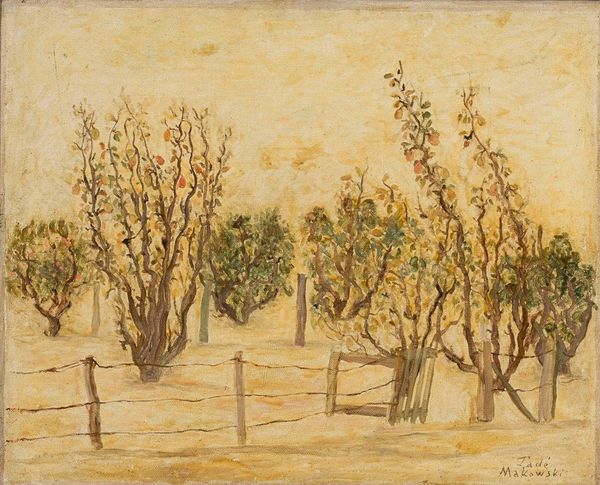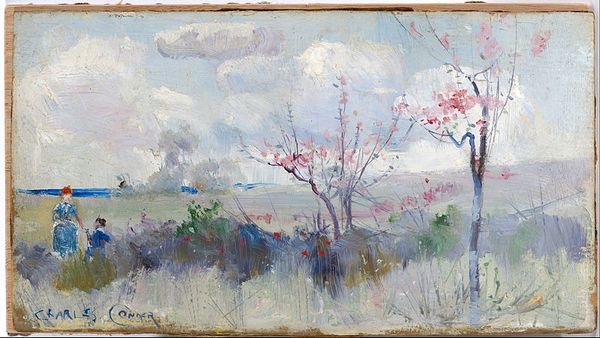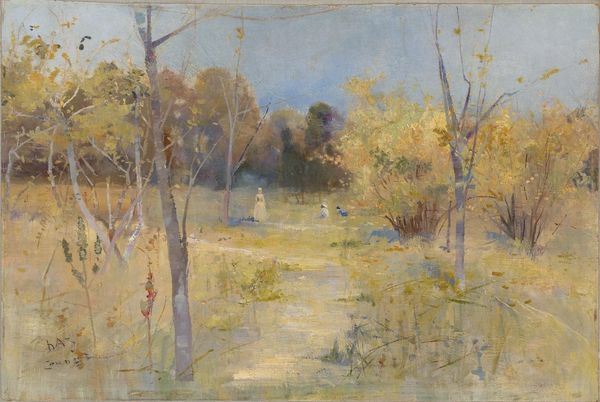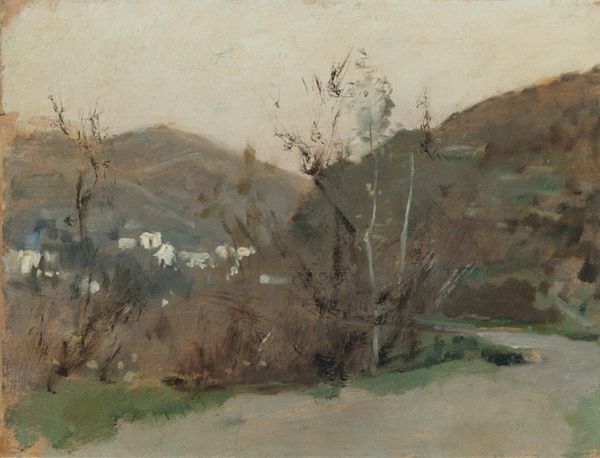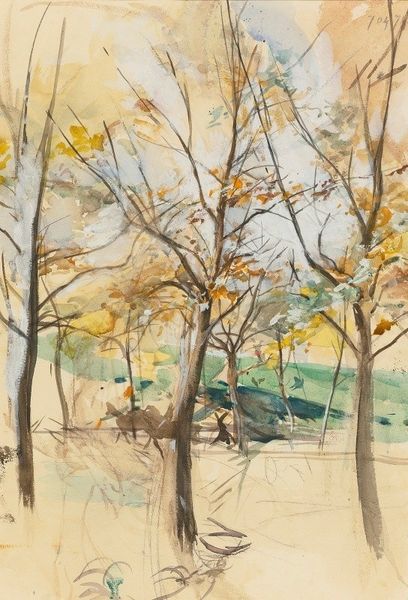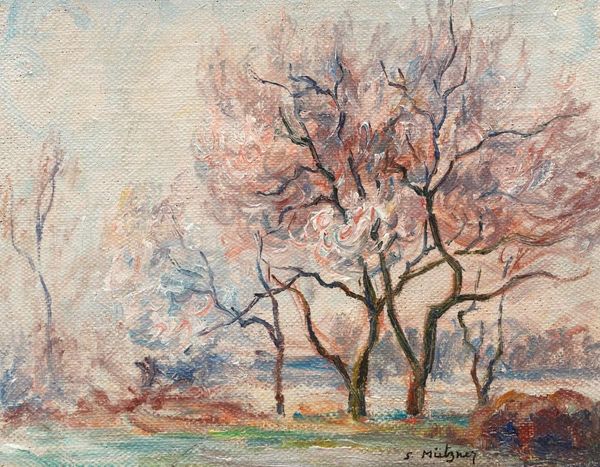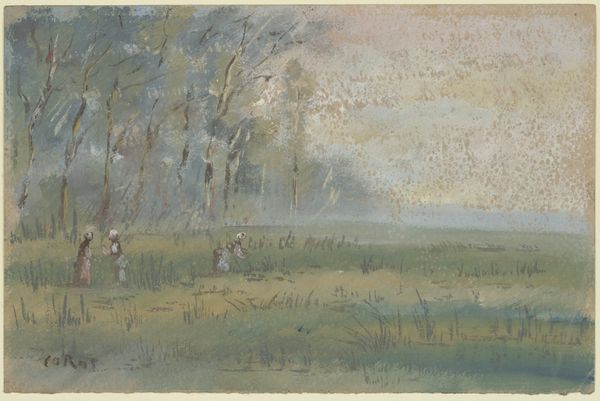
Copyright: Public Domain: Artvee
Curator: What a wonderfully evocative work. We’re looking at Ladislav Mednyánszky’s "Spring Landscape," thought to have been painted sometime between 1889 and 1897. Editor: Evocative is right. My first impression is…misty melancholy. The muted tones, the almost skeletal trees. It’s like spring is trying to break through, but winter still has a firm grip. Curator: I'd say you're accurately grasping its symbolic depth. Mednyánszky, working primarily en plein air, deftly employs oil paint here, and you can clearly see his impasto technique creating a layered, textured surface, conveying this transitional moment beautifully. Note how the composition draws your eye from the foreground with hints of spring green into the distant hazy purples. Editor: Absolutely. It's fascinating to consider how the political climate of the late 19th century in Austria-Hungary—with its nationalistic tensions—may have shaped the artist's perception and portrayal of the landscape. This isn't just nature; it's nature filtered through a specific historical lens. Were these landscapes politically charged expressions, or merely reflections of the Hungarian countryside? Curator: That's the enduring question. The romantic and impressionistic styles meet, a combination seen increasingly amongst his work during this period. What is particularly intriguing is the subtle yet palpable tension. It speaks to an interiority grappling with exterior forces, a dichotomy rife throughout fin-de-siècle Europe. Editor: Indeed. This work resides within the collection, but beyond its immediate aesthetic appeal, how do you perceive this work contributing to our understanding of Central European artistic identity during this era? Is it about universal emotions, or a culturally specific narrative? Curator: It invites viewers to consider this intersection between universal experience and the particularities of time and place, challenging any singular or simplistic reading. Editor: Well said. It appears, then, that this landscape presents not just an image, but an intellectual doorway. Curator: Precisely, reminding us that art engages in conversation, historical and contemporary.
Comments
No comments
Be the first to comment and join the conversation on the ultimate creative platform.


